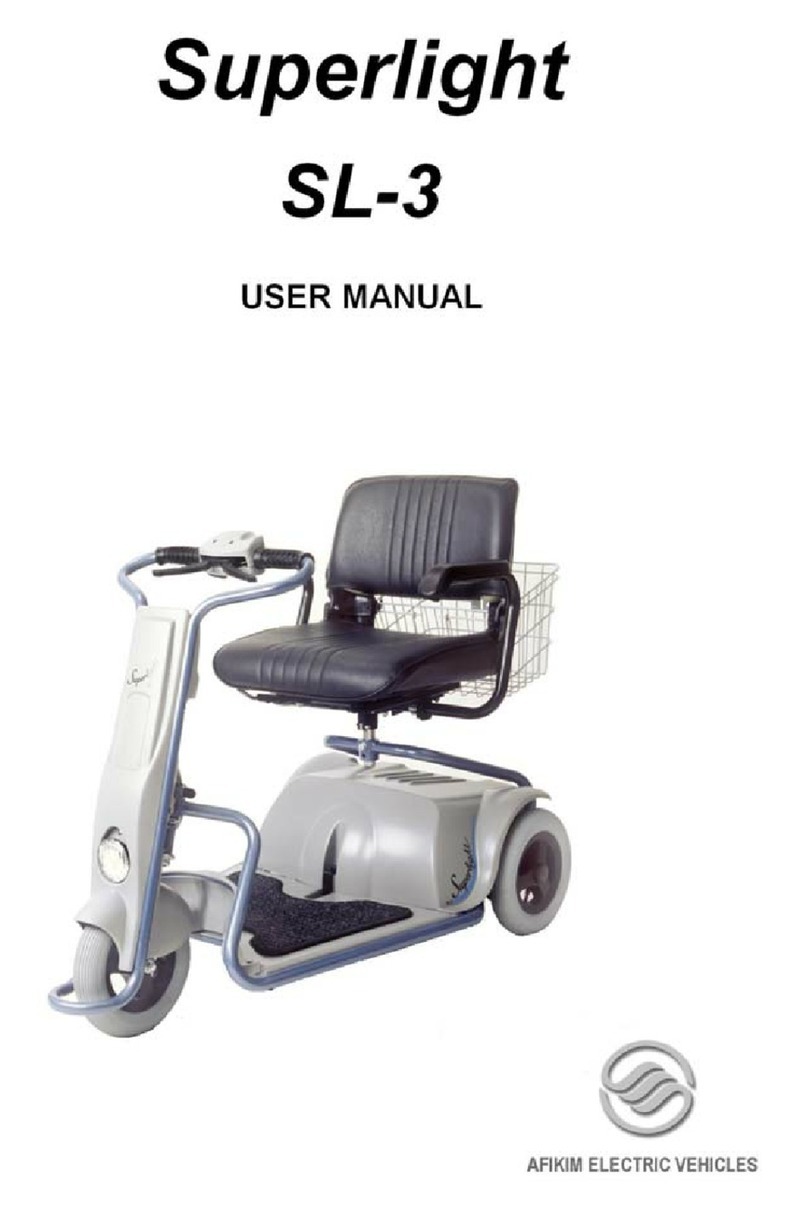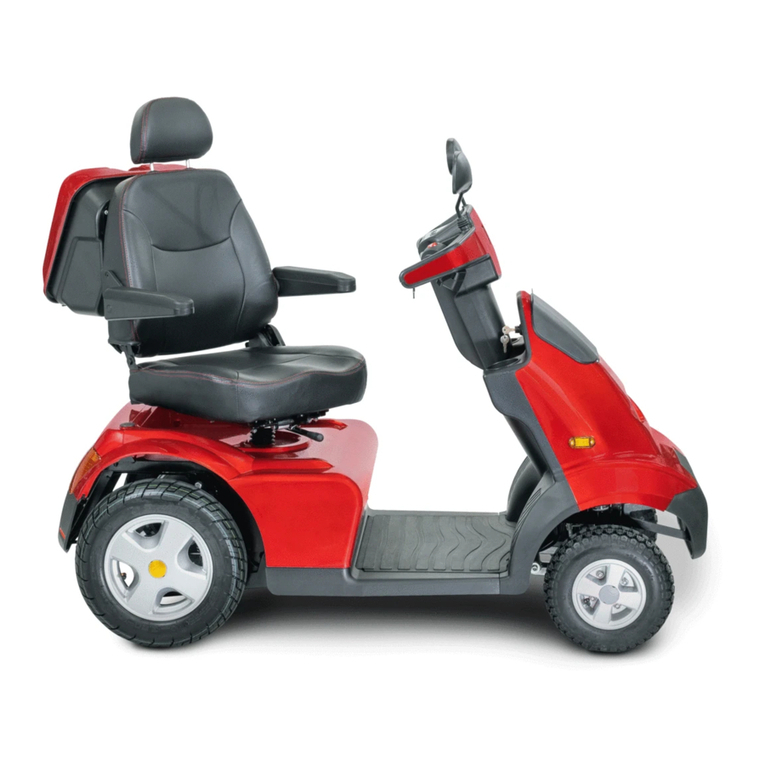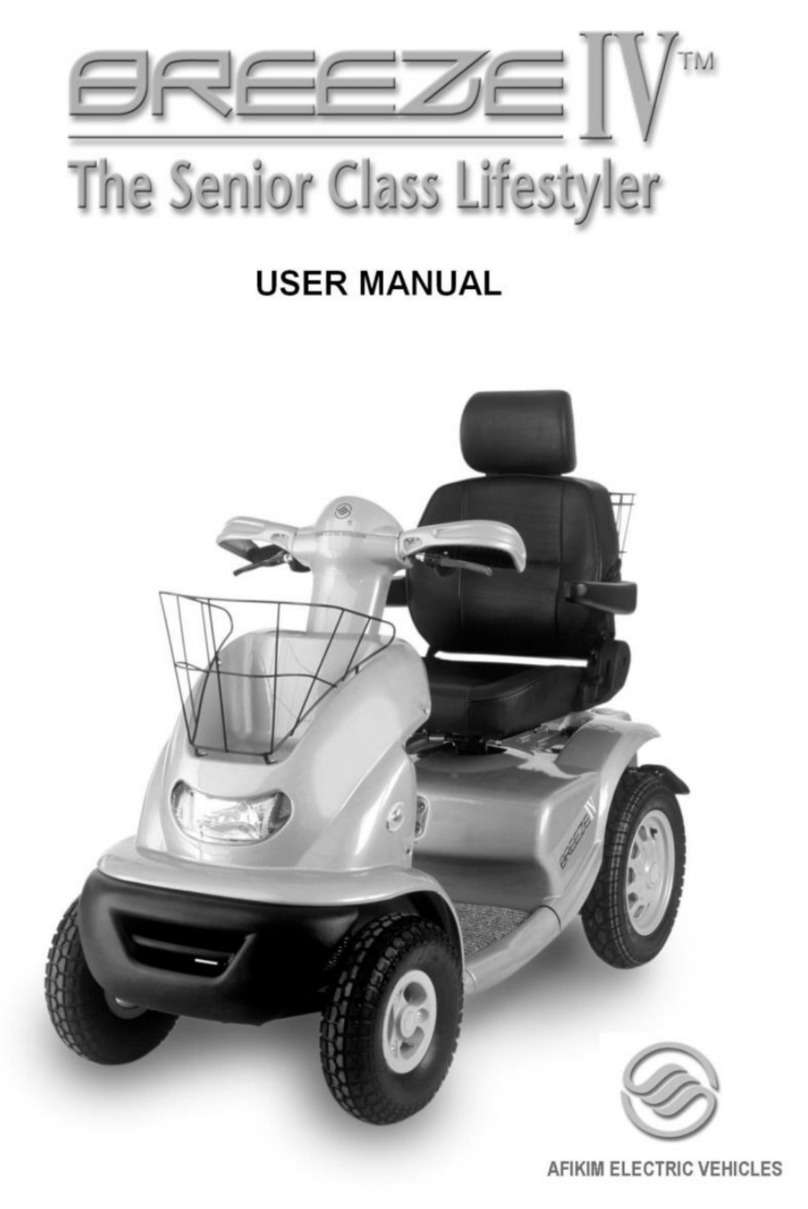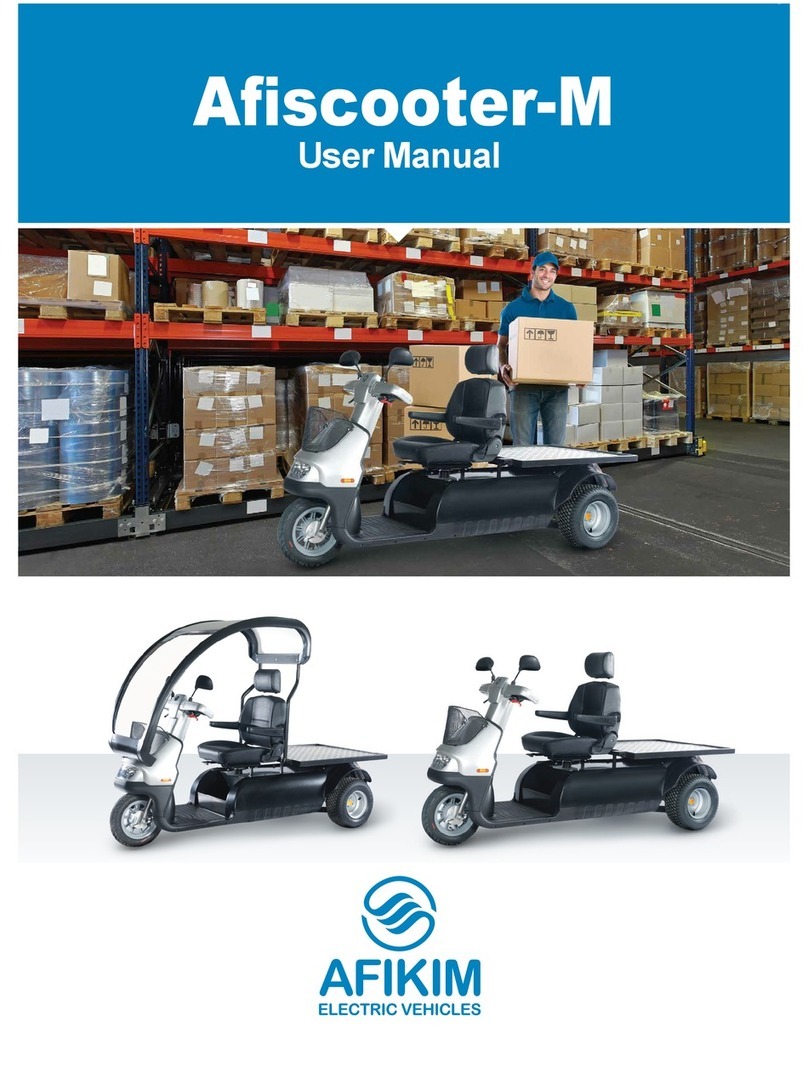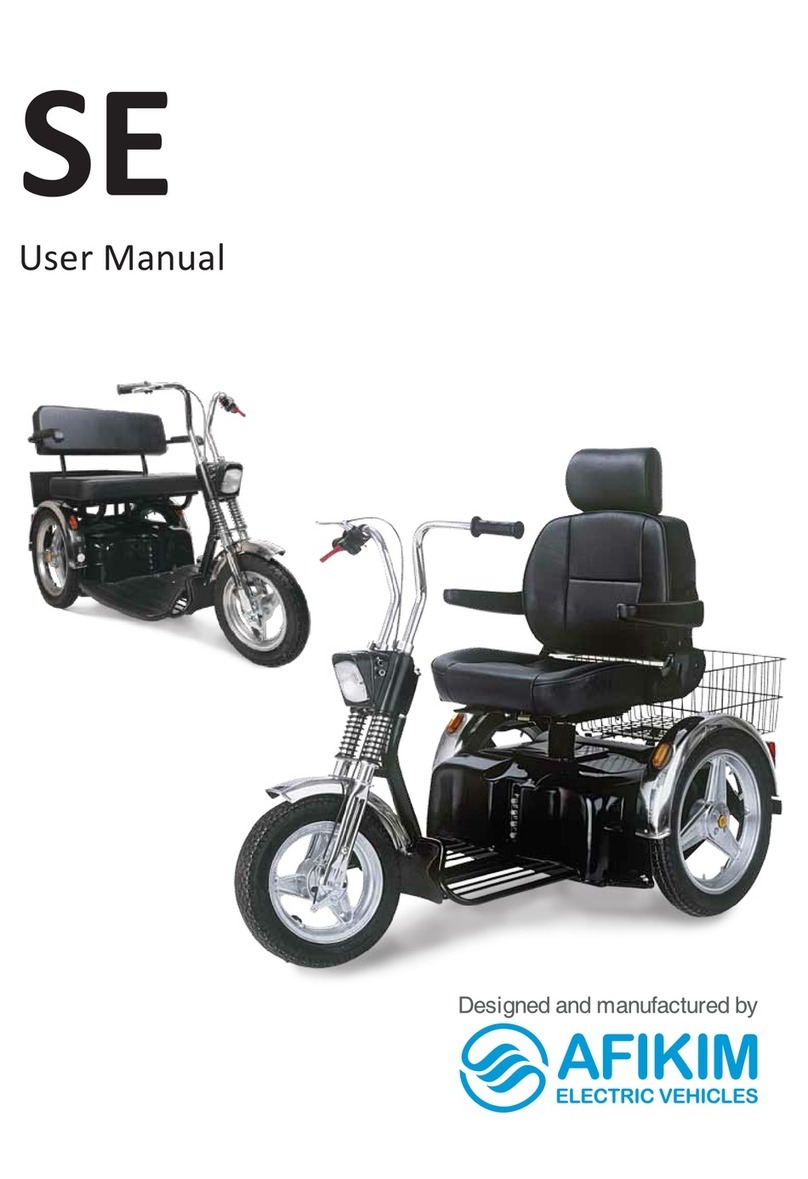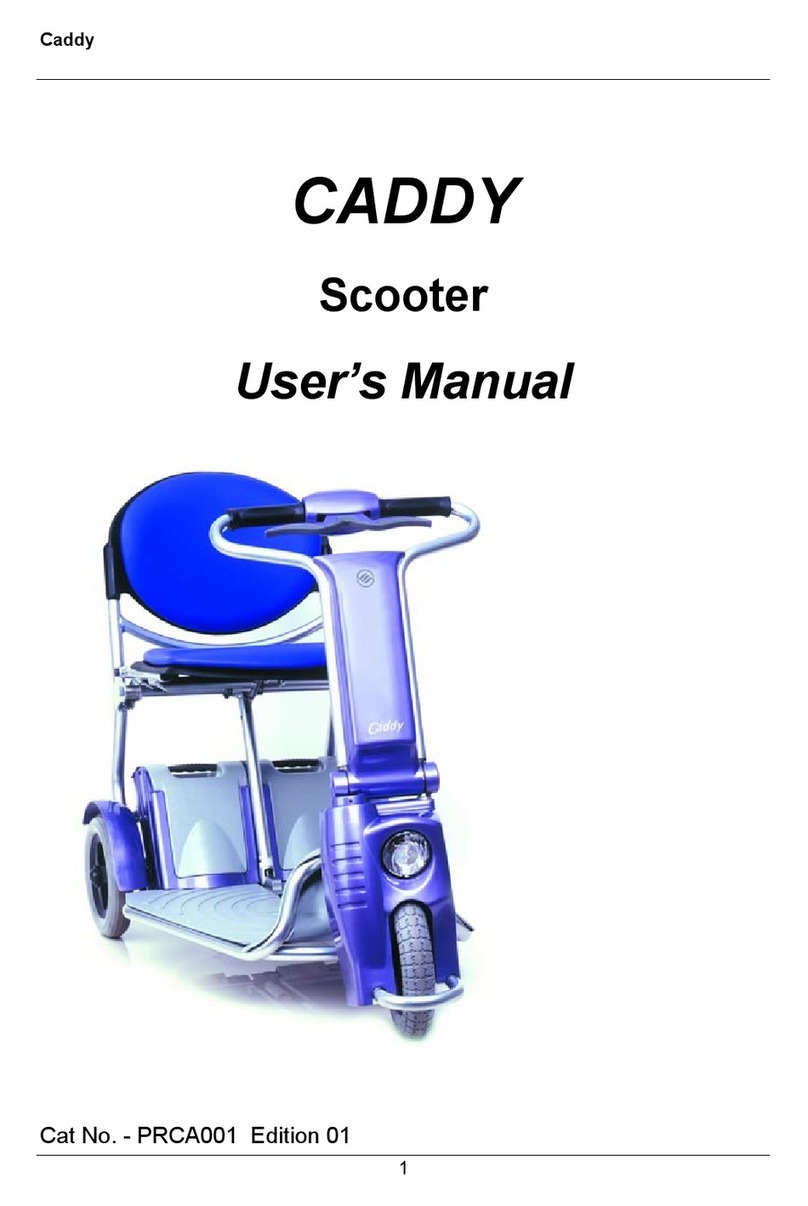1.1.1 Technicians who are servicing the scooter should be authorized to service
the scooter.
1.1.2 Technicians who are servicing the scooter should be aware and follow all
safety instructions within the User Manual.
1.1.3 Technician should follow general safety instruction like using gloves, safety
glasses when needed.
1.1.4 The scooter weight with batteries is about 100 kg even lifting 1 wheel is about
30 kg. Always use other people help or an appropriate lifting device.
1.1.5 When lifting always use your legs and not your back.
1.1.6 The battery weight is about 14 kg. The power unit weight is about 15 kg. The
seat weight is about 20kg.
1.1.7 Never do any change in the product before consulting the manufacturer
engineering. Remember the products are approve as they are, any change
remove the manufacturer responsibility for the safety of the product.
1.2 Drive :
1.2.1 Technicians who are driving the scooter should be aware and follow all safety
instructions within the User Manual.
1.3 Mechanic :
1.3.1 It is possible that a technician will need to operate the scooter when he is
standing on the side, working on different assemblies.
1.3.2 When no electric power and operation needed, always Stop the power by
Switch OFF and disconnecting the battery terminals.
1.3.3 Never put any part of your body under the scooter parts.
1.3.4 If necessary, first place a wood block under, to make sure no injure will
happen.
1.3.5 Use standard tools. Use them according to their safety instructions .
1.4 Electric :
1.4.1 If necessary to operate the scooter when you are not seating on it. In such
cases you should be aware to the parts that can move by power –Power unit
shafts and wheels.
1.4.2 Never put your hands close to a part that is moving or turning. Be aware that
your cloth will not be trapped into one of the moving parts.
1.4.3 Batteries contain a large electric energy inside. This energy can cause
sparks and heat metals when short circuiting.
1.4.4 When working on the battery terminals, make sure no to short circuit between
any 2 terminals. This can cause strong spars and make the tools very hot.
1.4.5 When working on the batteries, use protecting gloves and safety glasses.
1.4.6 Battery contains acid. Never open any of the battery case. If you see any
liquid or Gel aside, beware of it. It might be Acid.


